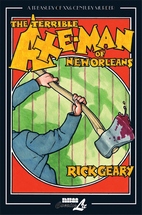
By John Wagner, Alan Grant, Carlos Ezquerra & various (Titan Books)
ISBN: 978-1-84023-634-7
Britain’s last great comic megastar might be described as a combination of the other two, combining the fantastic science and adventure of Dan Dare with the unrelentingly seditious anarchy and absurdity of Dennis the Menace. He’s also well on the way to becoming the longest-lasting adventure character in our admittedly meagre home-grown comics stable, having been continually published every week since February 1977 when he first appeared in the second issue of science-fiction anthology 2000AD.
However with at least 52 2000AD strips a year, annuals, specials, a newspaper strip (in the Daily Star and later The Metro), the Judge Dredd Megazine, numerous reprinted classic comics collections and even two rather appalling DC Comics spin-off titles, that adds up to a phenomenal amount of material, most of which is still happily in print from Rebellion.
One of the most attractive packages and certainly one of the most compelling is this sharply stylish black and white deluxe hardcover collection featuring one of the greatest storylines in the entire canon.
Judicial Briefing: Dredd and his dystopian ultra-metropolis of Mega-City One were created by a very talented committee including Pat Mills, Kelvin Gosnell, Carlos Ezquerra, Mike McMahon and others but with the major contribution coming from legendary writer John Wagner, who has written the largest portion of the canon under his own and several pseudonymous names.
Joe Dredd is a fanatically dedicated Judge in the super-city, where hundreds of millions of citizens idle away their days in a world where robots are cheaper and more efficient than humans and jobs are both beloved pastimes and treasured commodities. Boredom and madness has reached epidemic proportions and almost everybody is just one askance glance away from mental meltdown. Judges are last-ditch peacekeepers who maintain order at all costs: investigating, taking action and instantly trying all crimes and disturbances to the hard-won equilibrium of the constantly boiling melting pot. Justice is always immediate and final…
They are necessary fascists in a world permanently on the edge of catastrophe, and sadly, what far too many readers never realise is that the strip is a gigantic satirical black comedy leavened with oodles of outrageous, vicarious cathartic action.
Dredd’s world is a polluted and precarious Future Tense with all the key analogues for successful science fiction (as ever a social looking-glass for the times it’s created in) situated and sharply attuned to a Cold War Consumer Civilisation. The planet is divided into political camps with Post-nuclear holocaust America locked in a slow death-struggle with the Sov Judges of the old Eastern Communist blocs: militaristic, oppressive and totalitarian – and that’s by the US Judges’ standards, so just imagine what they’re like…
In 1981 Progs (that’s issue numbers to you) #236-244 featured a nine-part story ‘Block Mania’ which detailed an all-out war between two colossal habitation blocks in Mega-City One. With weekly instalments illustrated by Mike McMahon, Ron Smith, Steve Dillon and Brian Bolland (who also supplied some incredible covers) the all-out confrontation between Enid Blyton and Dan Tanna Blocks rapidly proliferated, engulfing surrounding Hab-units, spreading like a plague – or a chemical weapon.
Against a backdrop of utter berserker carnage Dredd discovers a plot by Sov agents to destabilise Mega-City One…
For once the Judge is too late and as his city burns the Dictatorat of East-Meg One launch a nuclear strike, following up with a ground-forces invasion. The Judges hit back with their own nukes and terrified of global Armageddon Mega-City Two and Texas City declare themselves neutral. Mega-City One will stand or fall alone…
Over forty years after the Battle of Britain ‘The Apocalypse War’ stunned and delighted readers. This epic tale of dogged resistance and bloody pyrrhic victory is a masterpiece of drama and tragedy, with Carlos Ezquerra drawing all 26 weekly chapters (even some covers!), and three decades later it still ranks as one of the greatest Dredd tales ever published.
Spectacular, violent, epic and leading to almost incomprehensible actions from someone most readers still considered a “hero†and “good guy†this is as powerful an anti-war story as Pat Mills and Joe Colquhoun’s Charley’s War and deserves as much acclaim and respect.
This volume collects the entire saga and its prequel Block War into one mesmerising and compelling work of glittering triumph and dark tragedy, and should grace the shelves of every serious fan of the medium – and the message.
® & © 2003 Rebellion. All rights reserved.









